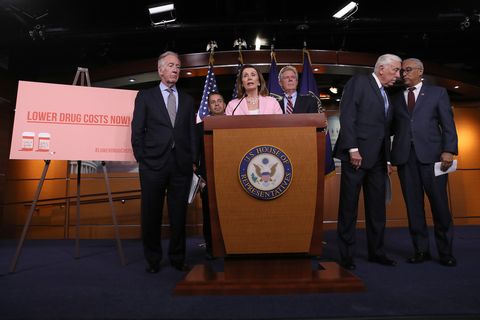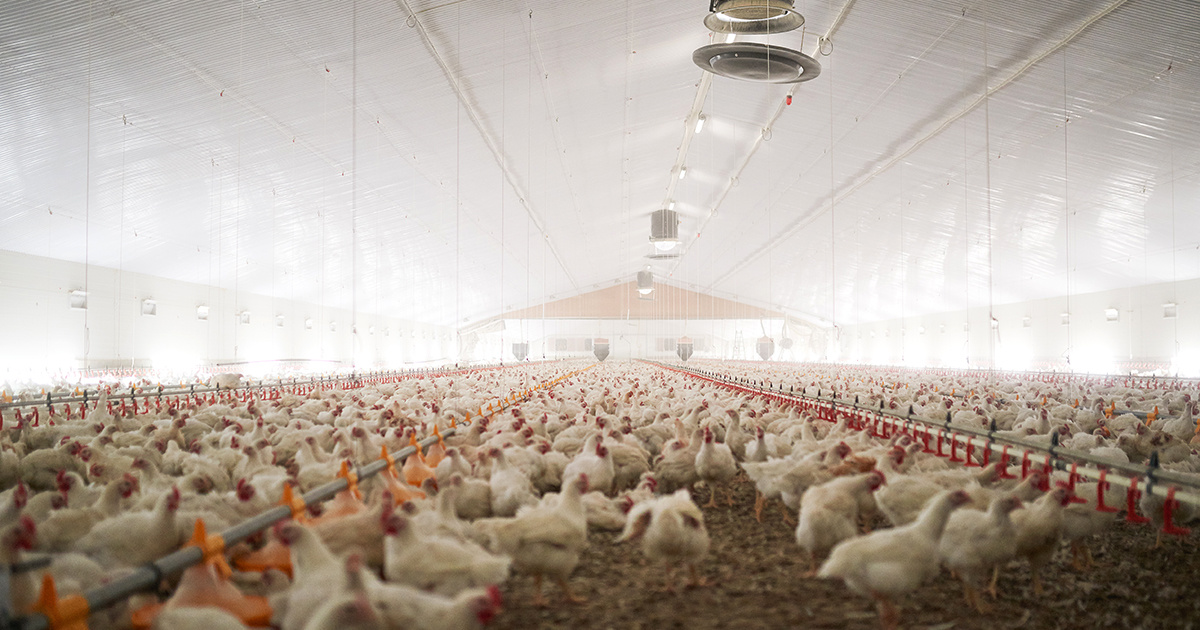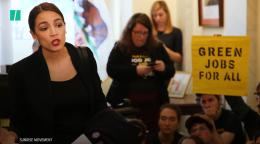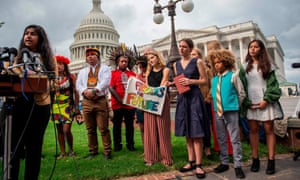Esquire
Democrats Must Impeach Donald Trump to Defend the Republic. Also, It’s Good Politics.
The president is lawless, and has violated his oath to defend the Constitution. Make Republican senators defend him and what he’s done.
By Jack Holmes, Esquire September 23, 2019
 SAUL LOEB/GETTY IMAGES
SAUL LOEB/GETTY IMAGES
At the risk of sounding a bit repetitive, Democratic leaders must come to grips with who and what Donald Trump is—and the nature of the Republican Party he leads—before this crew tramples what’s left of the republic. One of our two major political parties is now an authentic authoritarian outfit, where the political playbook at both the state and federal levels consists of using the mechanisms of democracy to strangle the popular will and entrench minority rule. Anything is acceptable if it helps you maintain your grip on power.
Just as important, every party official now marches in lockstep with The Leader, who will do anything he feels will benefit him personally as long as there are no concrete consequences. This is how Trump has behaved his entire life—strong-arming opponents, bending or breaking the law, using mobspeak to hint at the quid pro quo—and gotten away with it, except now he is President of the United States. The authoritarian knows only force, and until Democrats impose consequences for the president’s behavior in the form of legal force, Trump will continue to break the law and destroy institutions of the republic until the landscape of our politics is unrecognizable.
So far, Democrats have completely failed to make Trump believe there will be repercussions if he breaks the law or violates his oath to defend the Constitution. The Mueller Report detailed multiple instances in which the president blatantly attempted to obstruct justice in an investigation into whether he and his associates accepted help from a hostile foreign power in 2016. Democrats chose not to impeach the president, despite the fact that he’d broken the law repeatedly, and so far have failed to even call many of the key witnesses to testify before Congress.
No wonder, then, that Trump reportedly called the Ukrainian president the day after Mueller’s testimony and hinted, likely in mobspeak, that he would hold up $250 million in military aid until they got to work investigating Trump’s political opponent. There were no consequences for what we learned about Trump’s activities in 2016 and during the subsequent investigation, so why would there be consequences if he got up to the same—or more—in 2020? And in between, he has continued to destroy the separation of powers that forms the essential architecture of our Constitution and relentlessly profited from his office.
Democratic leadership, led by Speaker Nancy Pelosi, has thus far held the line that the best way to rid the republic of Trumpism is to defeat Trump at the ballot box in 2020. But this rests on a number of tenuous premises, not least that the elections will be free and fair. Domestically, the Republican Party will work overtime using the time-tested shenanigans: voter purges, voter suppression, closing polling places, old-fashioned ratfucking. And now the president has essentially put up a neon sign for the world’s shadiest operators: do me a favor and ratfuck my opponent, and there could be something in it for you down the line. Bonus points if you put money in my pocket at one of my hotels. He said we were waiting for word from the Saudis on whether the U.S. military should strike Iran, for Christ’s sake.
The simple fact is that the president is lawless and must be made accountable to the law, or his lawlessness will continue to spread and metastasize. Democrats must initiate impeachment proceedings against him on the basis that he has betrayed the republic and violated his oath of office. Along the way, they should call every witness they need and hold those who refuse to testify in contempt. They should literally be held in jail. Those who do testify but make a mockery of proceedings, like Cory Lewandowski did last week, should also be held in contempt.
The president is not going to suddenly see the light and stop doing crimes because they’re the wrong thing to do. He will stop doing crimes if someone stops him from doing crimes. This is what he’s up to more than a year out from the election. What will he do between now and November if he is not held accountable, particularly when he knows that a failure to win reelection could mean a federal indictment?
Democratic leaders have also relied on the excuse that impeachment will not succeed in the Senate even if the House initiates proceedings. This is also absurd, particularly if you’re banking on winning the next election. Impeachment hearings function as an airing of the president’s misconduct, putting it on blast for the whole nation to see. Just 19 percent of the public supported impeaching Richard Nixon when the Watergate hearings began. By the time he resigned, it was 57 percent, because people learned the extent of his treachery. Support for Trump’s impeachment already hovers between 35 and 38 percent.
And along the way, it’s not just the president who will come under pressure for what he’s done. Senate Republicans will have to defend their defense of a criminal president, some of them while they’re running for reelection. Does Cory Gardner want to defend the president’s behavior while defending his seat in purple Colorado? Also, if you care about that kind of thing, they’ll have to live out the rest of their lives knowing they, too, betrayed everything they claimed to hold dear to stay in favor with The Base.
Simply put, Democrats must impeach Trump because he has likely committed high crimes and misdemeanors. It is the right thing to do in defense of the republic. But it will also be good election-year politics as they try to sink Trump and take the Senate, without which any Democratic legislative agenda is dead on arrival. The only reason they wouldn’t, at this point, is that they are afraid. Or maybe Pelosi and her leadership team still think they’re playing chess when Trump and his crew upended the board years ago.











